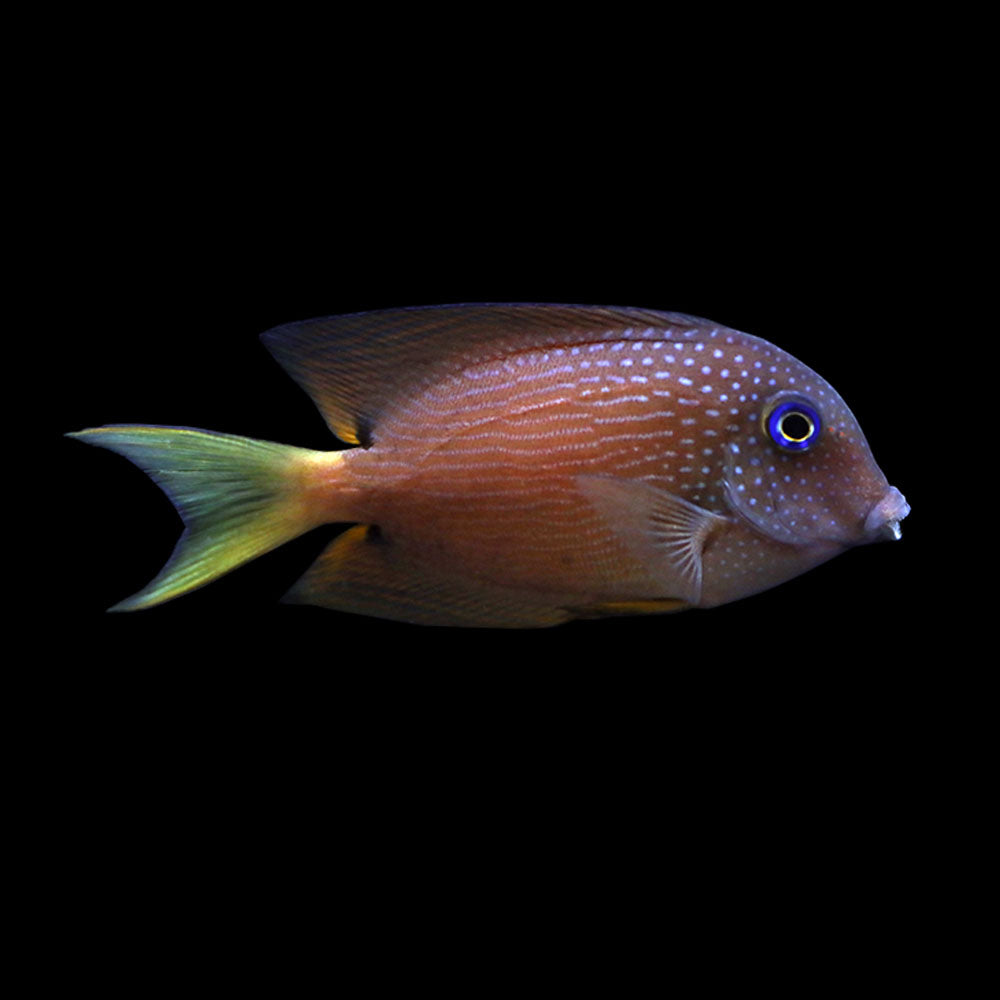AQUARIUM ARTS
Blue Eye Kole Tang (Ctenochaetus binotatus)
Blue Eye Kole Tang (Ctenochaetus binotatus)
Couldn't load pickup availability
Blue Eye Kole Tang (Ctenochaetus binotatus)
Description:
Behavior: The Blue Eye Kole Tang, also known as the Two Spot Bristletooth Tang, is a peaceful and active species. They are known for their constant grazing behavior, which helps control algae growth in the aquarium. These tangs are generally non-aggressive and can coexist well with other marine species.
Color: The Blue Eye Kole Tang features a muted brown to dark blue body with fine horizontal stripes. The eyes are a striking blue, which stands out against their darker body and gives them their common name. The body may also have two distinctive spots on the upper part of the body near the dorsal fin, adding to their unique appearance.
Diet: Blue Eye Kole Tangs are primarily herbivores with a strong preference for algae. In captivity, they should be provided with a diet rich in marine algae, such as nori and spirulina. Supplementing their diet with high-quality flake food, pellets, and occasional meaty treats like brine shrimp and mysis shrimp can help maintain their health and vibrant coloration.
Tankmates: Blue Eye Kole Tangs are generally peaceful and can be housed with a variety of other marine fish, including peaceful species and larger, non-aggressive fish. Suitable tankmates include clownfish, wrasses, and gobies. This fish can be kept with other tangs of the same genus. It is advisable to introduce them all at the same time to an appropriately sized aquarium, usually 5 feet or longer. Ensure that algae and other food is not lacking to minimize aggression problems.
Reef Aquarium Compatibility: Blue Eye Kole Tangs are reef-safe and do not harm corals or invertebrates. Their herbivorous diet helps control algae growth, making them a beneficial addition to reef aquariums.
Max Size: Blue Eye Kole Tangs can grow up to 7 inches (18 cm) in length. Due to their size and active nature, they require a spacious aquarium of at least 70 gallons to thrive and maintain good water quality.
Origin: Blue Eye Kole Tangs are commonly found in the Indo-Pacific region, particularly around the Hawaiian Islands and other parts of the central and western Pacific Ocean.
Sexual Dimorphism: Blue Eye Kole Tangs do not exhibit significant sexual dimorphism, making it difficult to distinguish males from females based solely on appearance.
Interesting Facts:
- The Blue Eye Kole Tang is known for its constant grazing, which helps keep algae under control in the aquarium.
- In the wild, these tangs are often found in shallow reef areas, grazing on algae-covered rocks and coral reefs.
- They are relatively hardy and can adapt well to captivity with proper care and a well-maintained environment.
- Their unique combination of subtle body color and striking blue eyes makes them a favorite among marine aquarists.
Disclaimer: Aquarium Arts cannot guarantee compatibility with your current fish or the fish you buy and cannot be held liable for fish lost due to aggression.
Introduce the dynamic Blue Eye Kole Tang to your aquarium and enjoy their active behavior and unique appearance, enhancing the beauty and functionality of your underwater world.
Share


